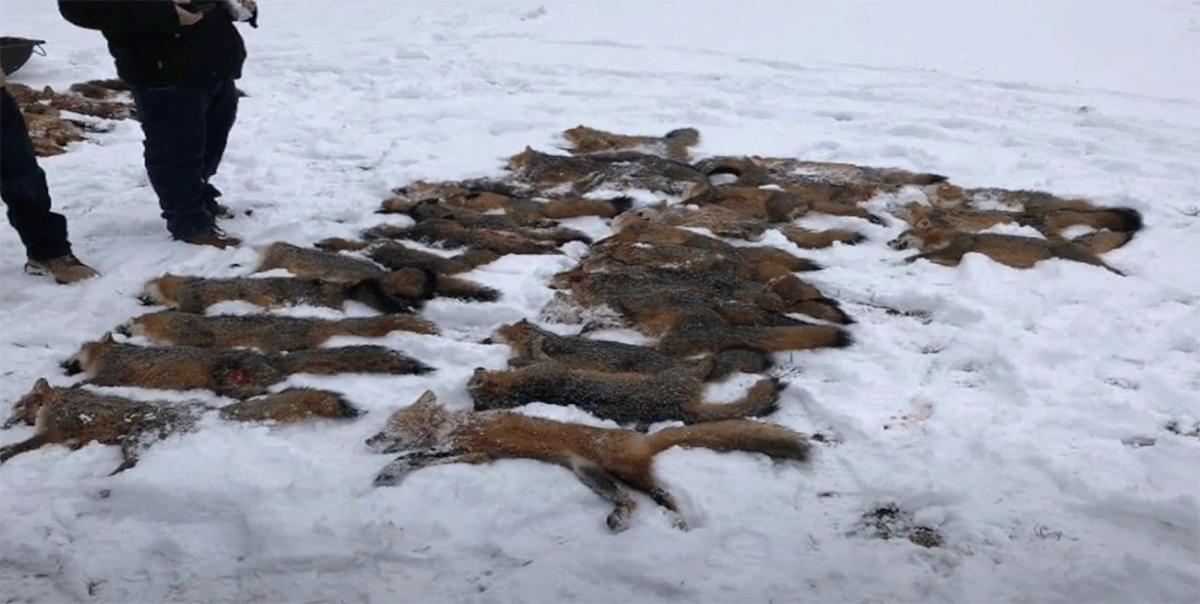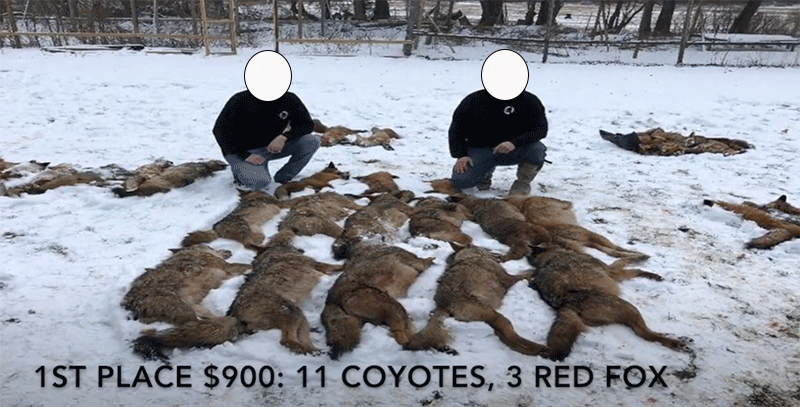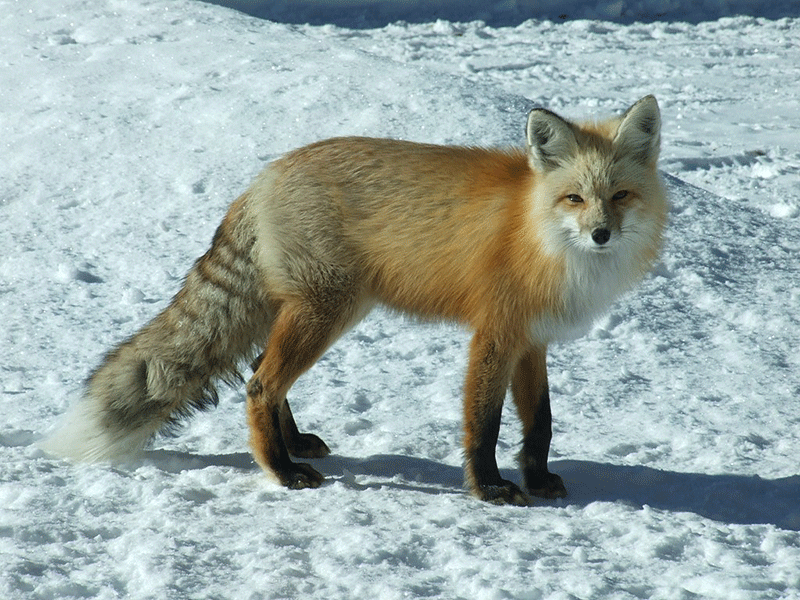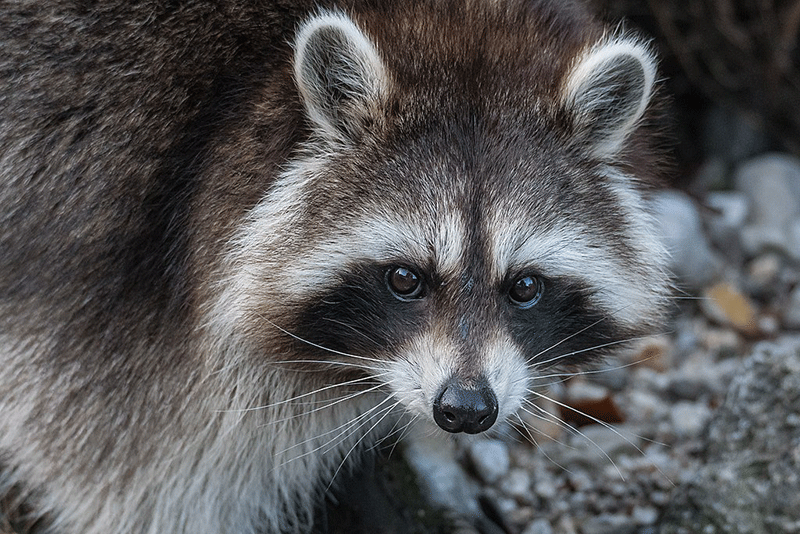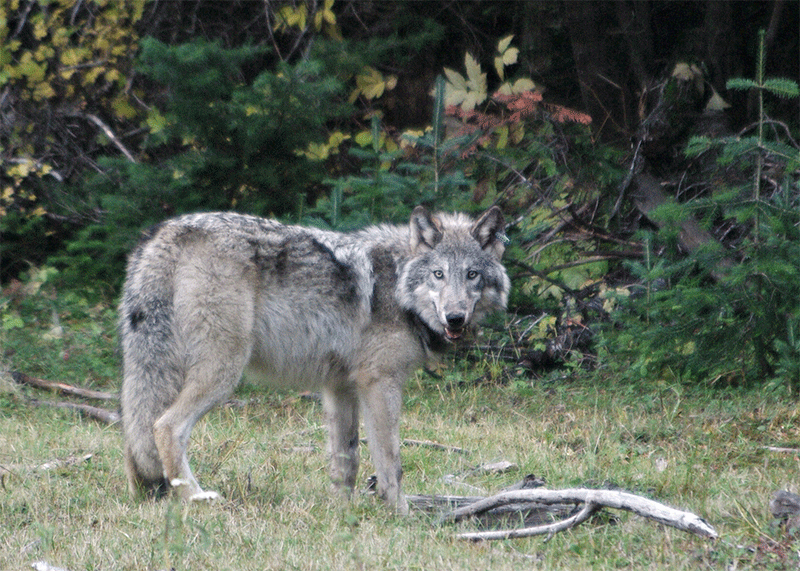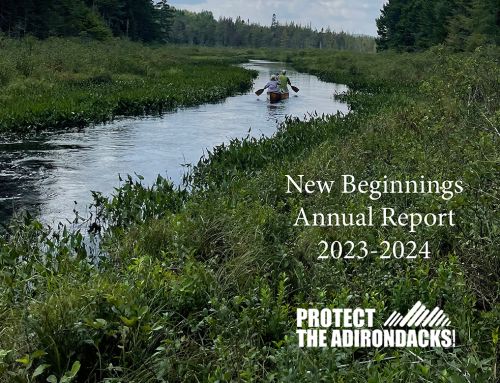This year, Protect the Adirondacks is working with a number of other groups to support legislation banning wildlife killing contests. New legislation, introduced by State Assembly Environmental Conservation Chair Deborah Glick and State Senator Timothy Kennedy, makes it “unlawful for any person to organize, sponsor, conduct, promote, or participate in any contest, competition, tournament or derby where the objective of such contest or competition is to take wildlife.” This legislation protects coyotes, small mammals and fur bearers.
Click here to read legislation.
Click here to read a Memo of Support for this legislation from Protect the Adirondacks.
This bill amends the Environmental Conservation Law to make it unlawful for any person to organize, sponsor, conduct,promote or participate in any contest, competition, tournament or derby with the objective of taking or hunting wildlife forprizes or other inducement, or for entertainment. Contests for taking or hunting white-tailed deer, turkey or bear are exempted, which are already regulated by season limits, as are special dog training areas or field trials or similar canine performance events. Violations are punishable by fines of $500 to $2,000. In addition, the remains of any wildlife killed in violation of the bill’s provisions are forfeited to the Department of Environmental Conservation.
According to the New York State Humane Association, there are currently at least 29 annual wildlife killing contests in New York State, of which 17 are coyote killing contests and the remainder are contests to kill foxes, squirrels, woodchucks, raccoons, and crows. Wildlife killing contests are contrary to sound principles of wildlife management and to fundamental principles of hunting ethics because they promote killing the largest number of target animals in the shortest time. To do this, participants often use unethical means such as fake distress calls, lures, and baits. In addition, the carcasses of the killed animals are often treated as trash and disposed of in dumpsters.
Eight other states have successfully moved to ban wildlife or coyote hunting contests, including Arizona, California, Colorado, New Mexico, Washington, Vermont, Massachusetts, and Maryland. The common thread through all these state laws is prohibiting contests that encourage killing of fur bearers or specific animals in organized contests for prizes or entertainment. Legislation is also pending in other states.
Coyote killing contests are particularly destructive because of the similarities between large Eastern coyotes and wolves, both of which are present in New York State. Wolves are listed as an endangered species under both federal and New York State law and the killing of wolves is prohibited under both federal and State law. There have been several documented instances in New York of hunters killing what they thought was a large coyote, but which DNA analysis proved to be a gray wolf. The most recent incident involved a large canid that was shot near Cooperstown in December 2021. The hunter believed it was a large coyote, but subsequent DNA analysis proved it to be 98% gray wolf. The Department of Environmental Conservation website states that “[a]ny canid 50 pounds or greater may be a wolf” and that “wolves are present in Algonquin Provincial Park in Ontario and it is possible for these animals to travel into New York.” Coyote killing contests award prizes for the largest“coyote” killed, thereby increasing the chances that endangered wolves may be killed. This is an unnecessary and unlawful result, because wolves are listed as an endangered species and are protected under federal and New York State law.
The purpose of this legislation, among other things, is to discourage hunting of large coyotes that may well be wolves. The unfortunate reality is that wolves confirmed in New York State are always dead animals, killed by hunters or in some kind of accident. New York needs to reform its coyote management to focus on protecting living animals that may be wolves and gathering data on both wolf and coyote populations in the State.

